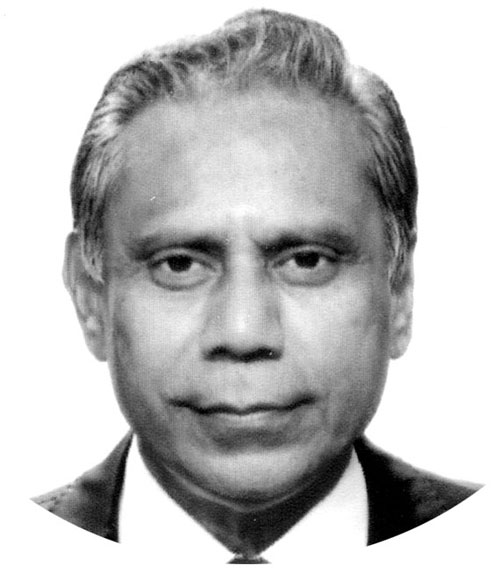Yaum-e-Takbeer — a defining moment for Pakistan
MAY 28, 1998, is etched deep in the memories of Pakistanis because on this day, the nation was constrained to come out of the nuclear closet.
When India had conducted its first nuclear test in 1974, Pakistan’s leaders had vowed to manufacture their own nuclear weapons even if we had to eat grass.
Numerous governments changed since then but one factor remained constant —Pakistan’s nuclear programme.
It goes to the credit of Pakistan’s nuclear scientists, engineers technicians, that a nation, which was looked down upon as not having the capability to even manufacture a needle, put its collective wisdom together to design and produce credible nuclear weapons.
Pakistan had no intention of confirming its nuclear weapons capability because the Occident was breathing fire and brimstones and threatening Pakistan of dire consequences.
The path to Pakistan’s acquisition of nuclear weapons and even the nuclear tests reads like a high suspense thriller because of the sanctions, the impediments placed in Pakistan’s path but the determination of our leadership, both civilian and military, guided the nuclear physicists to rise to the occasion and achieve the coveted goal.
On May 11 and 13 1998, India conducted its second series of nuclear weapons tests, announcing to the world that it had achieved the capability.
Matters did not rest there, because Indian leadership believed that Pakistan had not succeeded in achieving nuclear weapons capability so it tried to call Pakistan’s bluff by its jingoism.
Indian leadership started browbeating Pakistan, forcing its hands to conduct a series of nuclear weapon tests.
Besides the heightened Indian aggression, the West threatened Pakistan of dire consequences if it indulged in the tests.
International observers were following every move, monitoring through satellite imagery, thermal sensors and seismic observations to track Pakistan’s nuclear test prowess.
India and a number of other air forces planned preemptive strikes to thwart Pakistan’s nuclear weapons capability.
It again goes to the credit of Pakistani leadership, both military and civil, that the world became aware of the location of the nuclear tests only after the threshold had been crossed.
The site was well hidden, carefully camouflaged and secured in a manner that apart from a handful of people, it remained top secret.
Only after the Chagai mountain turned white because of Pakistan’s nuclear tests, that the world became aware of the location of the test. By that time the die had been cast.
Sanctions were imposed on Pakistan, the seventh nuclear power in the world was accused of nuclear proliferation and when the war on terrorism commenced, Pakistan’s nuclear weapons program was targeted with wild accusations.
It was surmised that terrorists will steal Pakistan’s nuclear weapons and use them against the West.
This was a preposterous indictment; as if nuclear weapons are hand grenades, which can be hidden under the armpits of a miscreant and used at will to wreak havoc.
Nuclear weapons are sophisticated weaponry, which necessitate a high level of technical know-how to use the weapon.
This kind of baseless allegations had their brighter side. Pakistan established a credible Nuclear Command Authority, with refined systems to ensure the safety as well as security of Pakistan’s nuclear arsenal.
Not satisfied with its heinous plot to defang Pakistan, the Occident tried to conduct surprise attacks and strikes against Pakistan’s nuclear weapons arsenal.
Again it is a matter of pride and satisfaction that Pakistan has dispersed its weaponry in such a manner that its detractors have failed to get even a clue to their location.
Pakistan’s nuclear weapons have played a vital role in deterring Indian aggression and coercion post-1998.
The first instance – in 2002, the Indian military placed half a million troops on Pakistan’s border.
This was done in response to the devastating attack on the Indian Parliament in December 2001, for which the Indians mischievously blamed Pakistan.
After eleven months, hundreds of lives lost, and billions of dollars wasted, the Indians finally retreated.
If Pakistan did not have a credible nuclear deterrent, the Indian soldiers would have triumphantly marched across the border. It was the same scenario following the 2008 Mumbai attacks, and the Pathankot incident.
India was forced to show restraint because of the deterrence created by Pakistan’s nuclear weapons.
By the advent of the Twenty First Century, Pakistani defence planners had achieved second strike capability.
In order to preempt Pakistan’s use of nuclear weapons in an armed conflict, Indian defence planners devised the “Cold Start Strategy” which would enable Indian armed forces to strike in a Blitzkrieg manner—swiftly and promptly and decimate Pakistan’s defence capability—even before it could launch its nuclear weapons. Pakistani military think tanks had a solution to counter the Cold Start Strategy.
They developed tactical nuclear weapons, which could be carried into the battlefield, deterring any adventurism against Pakistan.
The second strike capability of launching weapons from ground, sea, aerial and sub surface platforms provided credible second strike capability, dampening the spirits of adventurism of would be protagonists, who wanted to decimate Pakistan.
On 26 February 2019, India attempted a surgical strike against alleged terrorist training camps near Balakot inside Pakistan.
Not only did the strike fail, the very next day, Pakistan retaliated in a calculated manner, in which India had to eat a humble pie. Pakistan’s nuclear arsenal is for securing its defence.
If India or any other adversary has the wrong notion of targeting Pakistan, it will get a befitting response.
—The writer is retired PAF Group Captain and a TV talk show host.










